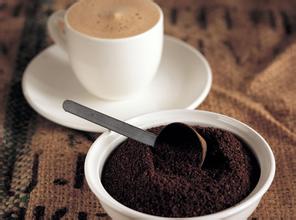Introduction of high-quality and delicious Indonesian Java coffee flavor manor area characteristics of high-quality coffee beans
The most important island of Indonesia, the political, economic and cultural center of the country. It is about 970 kilometers from east to west and 160 kilometers from north to south, forming a narrow shape. It covers an area of 126000 square kilometers and has a population of about 124 million (2005 data). Mainly to mountains and hills, there are many volcanoes, there are 58 volcanic peaks above 1800 meters above sea level, of which 14 are above 3000 meters. Mount Semeru, the highest peak on the island, is located in the southeast of the island at 3676 meters above sea level. How wide the basins are in the mountains, many of which are the birthplaces of the ancient kingdoms of Indonesia and are still developed agricultural belts and town centers. The northern coast is an alluvial plain with many man-made ports; the south bank is steep and hilly. Earthquakes and tsunamis are frequent. The climate is hot, with high temperature and rainy weather all year round in the west and dry season in the east. The annual precipitation is about 1500 mm, less than 1000 mm in a few areas and more than 4000 mm in mountainous areas. There are many rivers, and the rivers entering the sea on the north bank are large, mainly Zhi Lion, Zhi Manu, Thoreau, Zitarong, Brantas and so on. The soil on the island is fertile, the natural conditions are good, and the forest cover rate is 23%. The land reclamation rate is 70%, which is the highest in the country. Mineral deposits include oil, coal, manganese, iron, gold, silver, phosphorus, sulfur, iodine and so on. Rice, corn, tea, peanuts, sucrose, kapok, cinchona cream and teak account for 60% to 90% of the national output, as well as rubber, coffee, oil palm, coconut and cocoa. Industries include oil refining, shipbuilding, machinery, metallurgy, rubber, textile, chemical industry, papermaking and so on. Traffic is well developed, with 60% to 70% of the mileage of roads and railways in the country.
Administratively, Java consists of three provinces, Wantan, West Java, Central Java and East Java, and two special zones, the capital of Greater Jakarta and Yogyakarta. Administratively, the special zone belongs to the provincial level.
The Dutch first spread coffee to Central and South America in the 1820s. Coffee spread from Dutch colonies to French Guiana and Brazil. during their colonization, the Dutch grew coffee in Malaba, India, and brought it to what is now Batavia in Indonesia-Java in 1699. The Dutch colonies once became the main supplier of coffee in Europe. At present, Indonesia is the fourth largest coffee exporter in the world.
Later, it was brought to Jamaica by the British. By 1925, growing coffee had become a tradition in Central and South America. In the same year, Hawaii also began to grow coffee, which is the only coffee producer in the United States, and Hawaiian coffee is one of the best coffee in the world.
At present, 90% of the coffee beans exported from Indonesia are Robusta beans, and only 10% are Arabica. Before 1920, due to a major environmental disaster, Indonesian coffee varieties were replaced with Robusta beans, so Mandarin coffee in Sumatra is a rare Arabica bean, a treasure before it was discovered in the Blue Mountains. Such authentic production of very little Indonesian coffee for Arabica, Arabica manor was destroyed by the leaf rust disaster at the end of the 18th century, at first, the Dutch tried to grow Liberian species, and later, began to plant Robusta species on a large scale.
At present, Arabica species account for about 10-15% of the coffee produced in Indonesia, and the rest is Robusta. Although Liberika species are produced, they are basically not included in the coffee trade.
Coffee harvest
There are usually two harvest seasons in Indonesia, the main harvest season (main crop) occurs from September to October, and the second harvest season (fly crop) occurs from May to June.
Arabica will be picked by hand, and workers who pick by hand will enjoy a minimum wage, on the basis of which there will be performance pay.
Brief introduction of Indonesian Coffee Indonesian Coffee (1)
Coffee treatment
Coffee from Java is traditionally washed.
Sumatra and Sulawesi are famous for their "wet planing" wet-hulled with Indonesian characteristics, known locally as Giling Basah.
The drying methods in coffee treatment vary according to the situation: high-priced bed drying in rain canopy, balcony drying, roadside drying and so on.

Important Notice :
前街咖啡 FrontStreet Coffee has moved to new addredd:
FrontStreet Coffee Address: 315,Donghua East Road,GuangZhou
Tel:020 38364473
- Prev

Introduction to fine coffee with mild flavor and taste characteristics of Costa Rican coffee manor
The topography of Costa Rica is that the coast is surrounded by plains, while the middle is cut off by rugged mountains. The country declared 200 nautical miles in its exclusive economic zone and 12 nautical miles in its territorial sea. The climate belongs to the tropics and subtropics, and some of them are new tropics. [3] the climate of Costa Rica is so different that it completely subverts the classification of the four seasons of the year. There are only two seasons, April to December.
- Next

Taste of Guatemalan Coffee with Sweet and sour Fruit characteristics of Fine Coffee beans
United Fruit has its largest estate in Guatemala, and it also owns the Central American International Railway and Guatemala's only seaport. Driven by the United Fruit Company, the US Ministry of Foreign Affairs began a propaganda war against Guatemala to crack down on the Arbens regime in the name of anti-communism. The CIA, in cooperation with the opposition among Guatemalan soldiers, began a program called
Related
- Detailed explanation of Jadeite planting Land in Panamanian Jadeite Manor introduction to the grading system of Jadeite competitive bidding, Red bid, Green bid and Rose Summer
- Story of Coffee planting in Brenka region of Costa Rica Stonehenge Manor anaerobic heavy honey treatment of flavor mouth
- What's on the barrel of Blue Mountain Coffee beans?
- Can American coffee also pull flowers? How to use hot American style to pull out a good-looking pattern?
- Can you make a cold extract with coffee beans? What is the right proportion for cold-extracted coffee formula?
- Indonesian PWN Gold Mandrine Coffee Origin Features Flavor How to Chong? Mandolin coffee is American.
- A brief introduction to the flavor characteristics of Brazilian yellow bourbon coffee beans
- What is the effect of different water quality on the flavor of cold-extracted coffee? What kind of water is best for brewing coffee?
- Why do you think of Rose Summer whenever you mention Panamanian coffee?
- Introduction to the characteristics of authentic blue mountain coffee bean producing areas? What is the CIB Coffee Authority in Jamaica?

